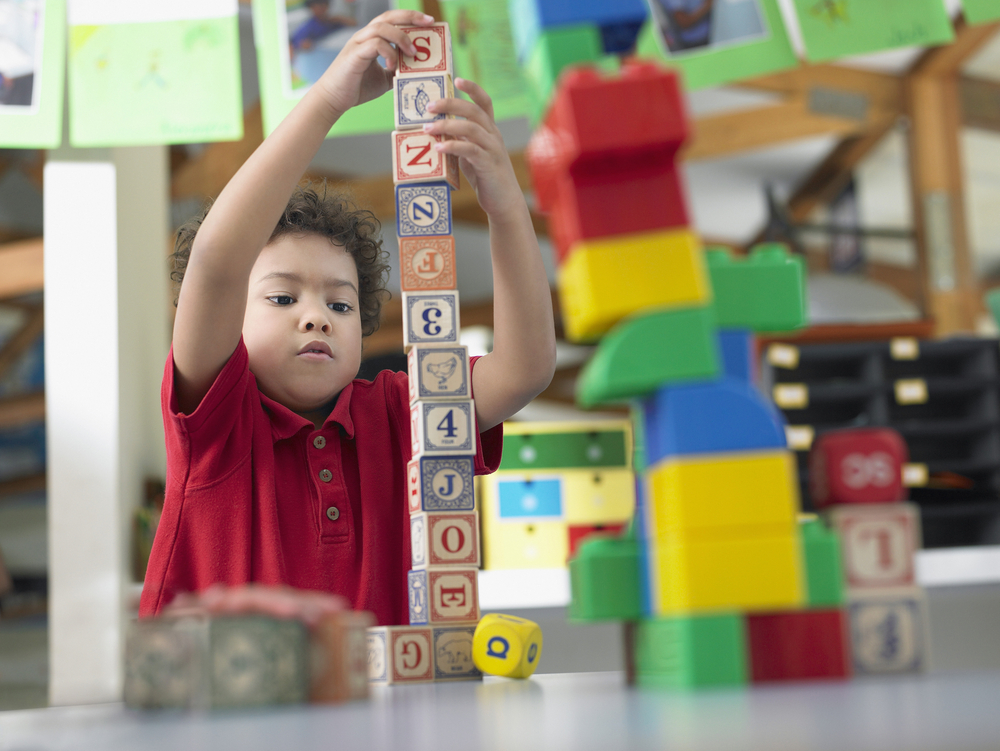Comparing Fractions Numbers Worksheets for Ages 3-8
7 filtered results
-
From - To
Introducing our "Comparing Fractions Numbers Worksheets for Ages 3-8," designed to nurture your child's understanding of fractions through engaging and educational activities. Tailored for young learners, these worksheets offer a variety of fun exercises that help children grasp core concepts, like comparing and understanding fractions. Each activity is crafted to boost mathematical confidence and foster a love of learning. Our worksheets cater to different skill levels, ensuring progress and comprehension. With vibrant visuals and easy-to-follow instructions, these worksheets are perfect for both homeschooling and classroom settings. Give your child a head start in math with our expertly designed materials!
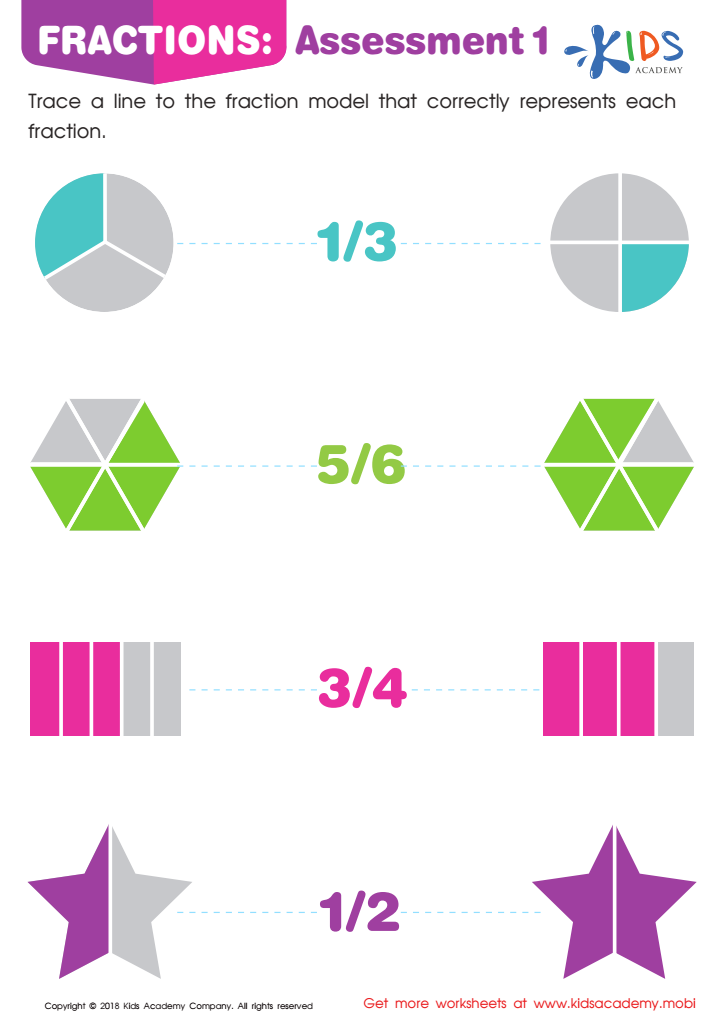

Fractions: Assessment 1 Worksheet
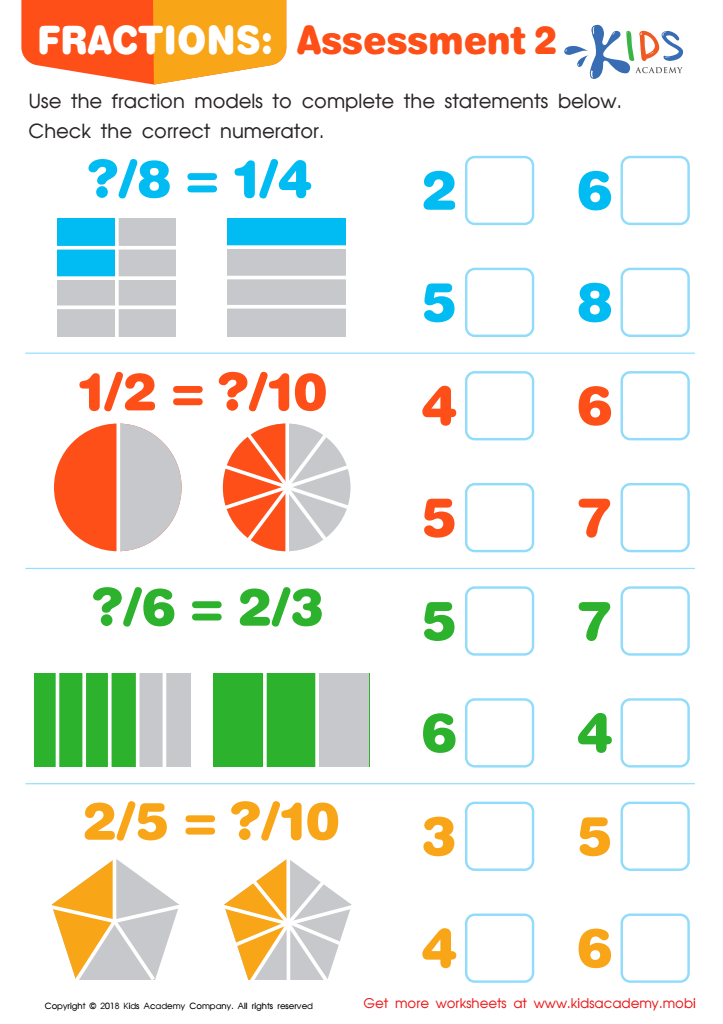

Fractions: Assessment 2 Worksheet
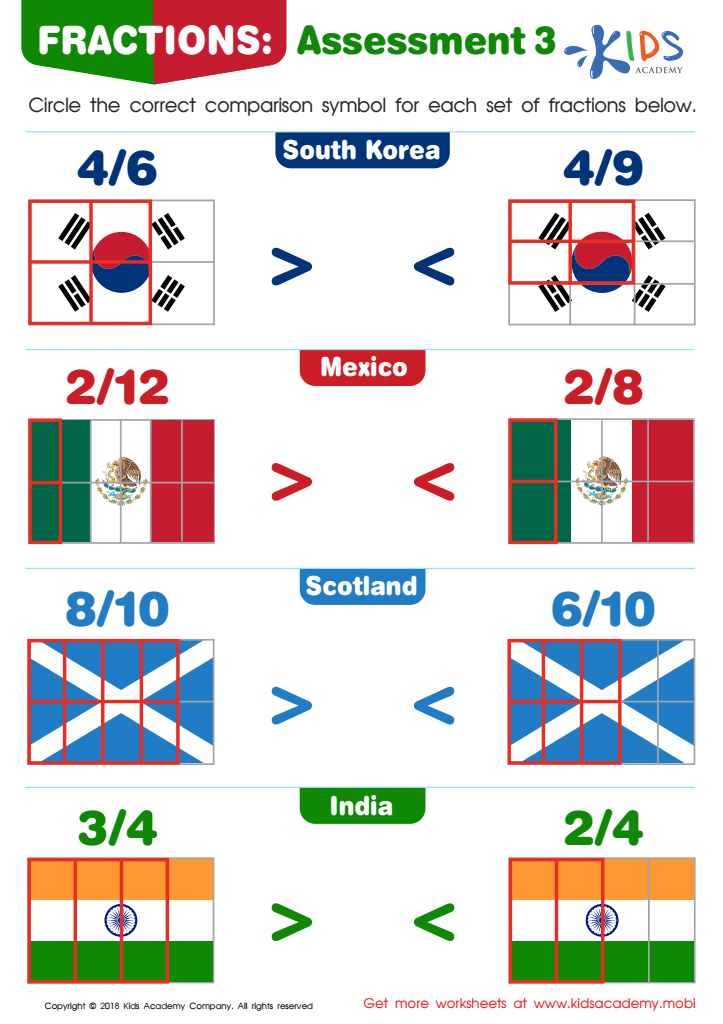

Fractions: Assessment 3 Worksheet
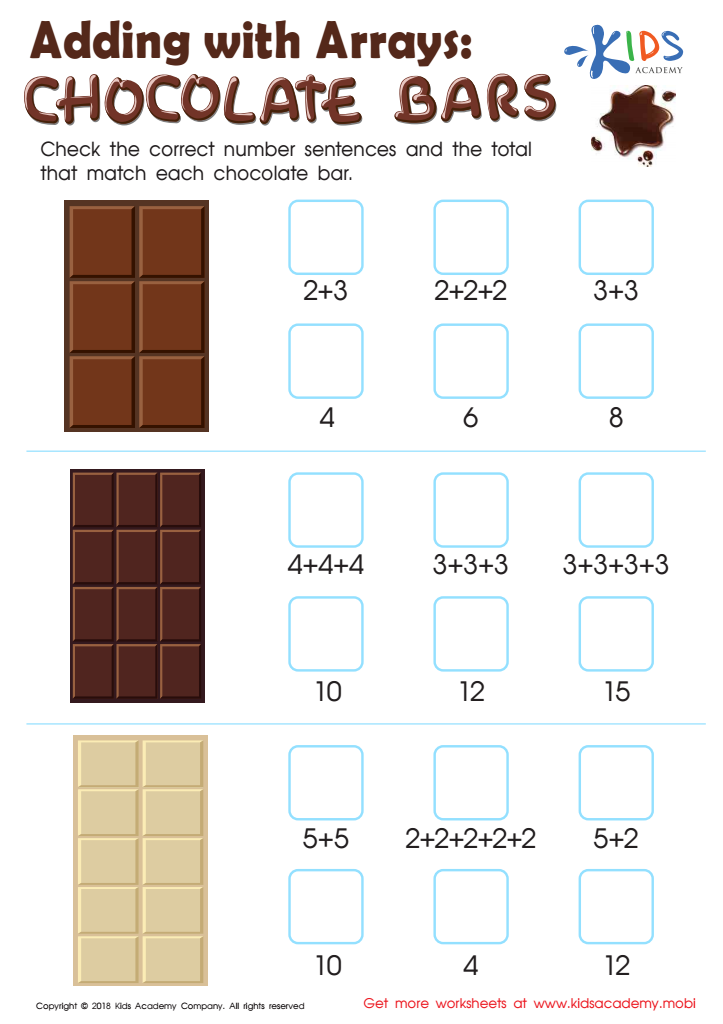

Adding with Arrays: Chocolate Bars Worksheet
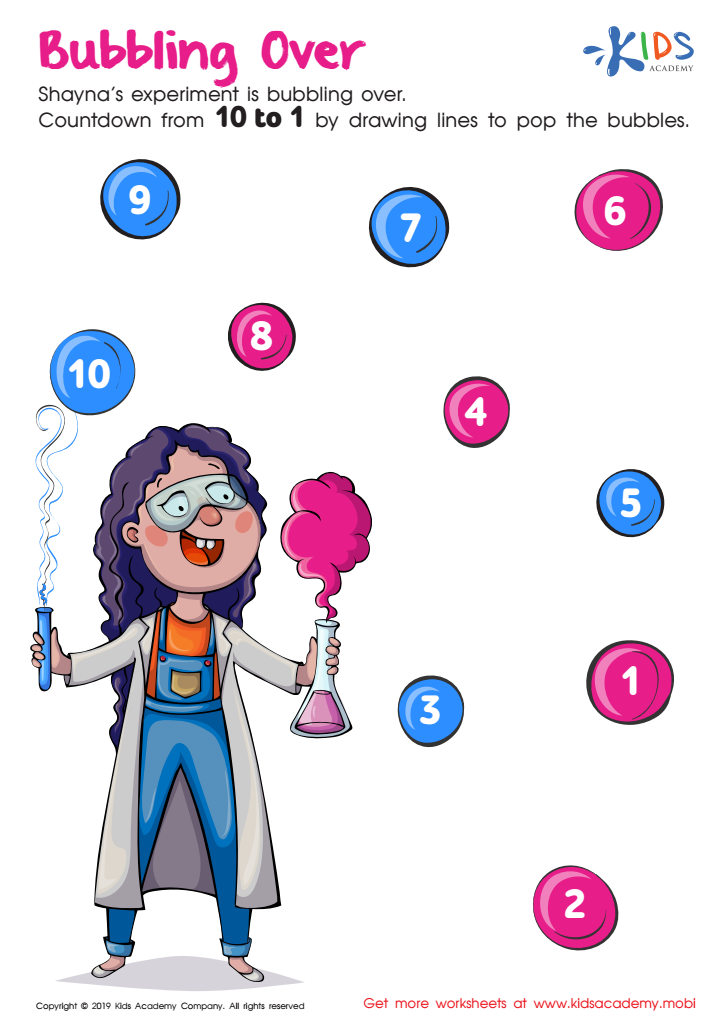

Bubbling Over Worksheet
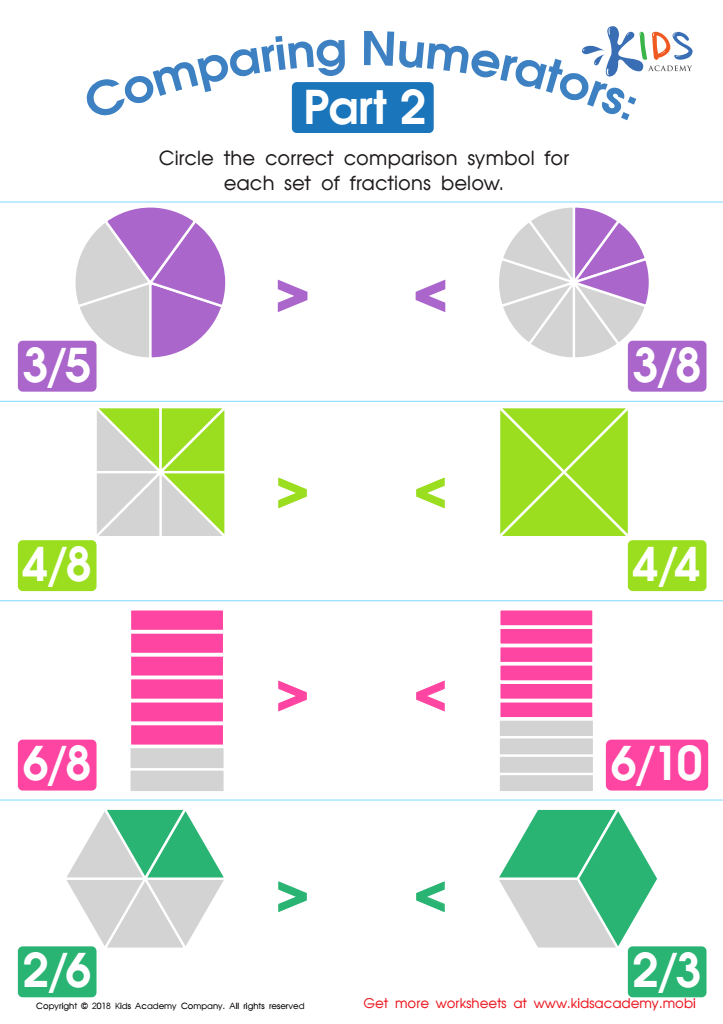

Comparing Numerators Part 2 Worksheet


Compare Fractions Worksheet
Understanding fractions is a fundamental component of early mathematical learning, which sets the foundation for more advanced concepts in later academic years. For children aged 3-8, comparing fractions helps develop crucial skills such as number sense, logical reasoning, and problem-solving. Parents and teachers should prioritize this to ensure a child's success in mathematics and other intertwined subjects like science and engineering.
First, comparing fractions paves the way for grasping the enormity of mathematical concepts. It enables children to understand how parts relate to a whole, which is essential not just in counting but also in understanding patterns and measurements. For instance, knowing that 1/2 is larger than 1/4 offers a visual and intuitive grasp of quantity that aids in everyday decision-making.
Second, introducing fractions at an early age can mitigate math anxiety. When children become comfortable with fractions early on, they approach more complex topics with confidence. Encouraging a child's ability to break down and compare quantities encourages precision in thought and communication, which are valuable across academic disciplines and in real-life situations.
Lastly, involving parents in fraction learning activities enhances parental engagement. Engaging in simple, practical exercises like slicing pizzas or sharing shapes fosters a collaborative learning environment, fortifying a child's confidence and reinforcing the joy of learning at home and school.
 Assign to My Students
Assign to My Students




.jpg)



